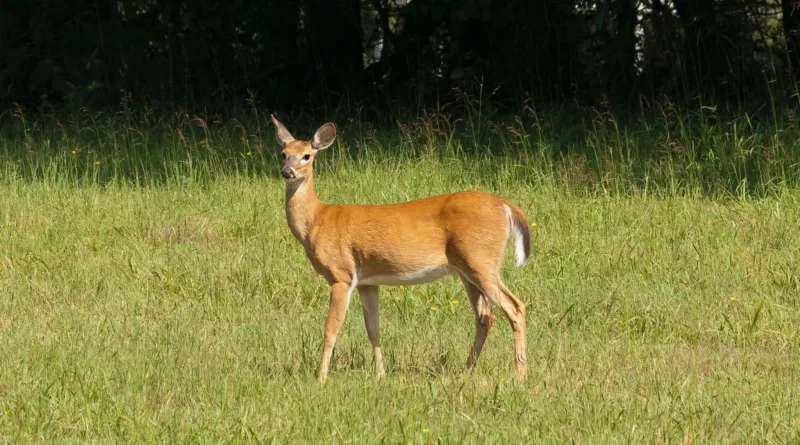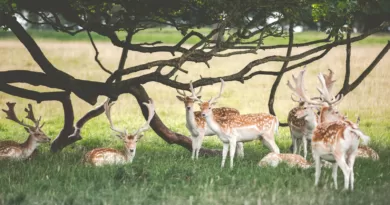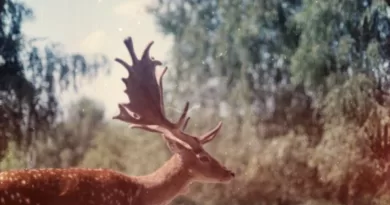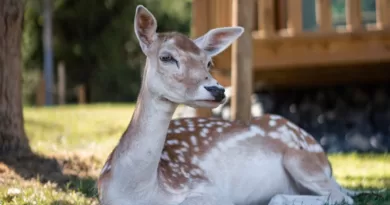A Wolf Eating a Deer
The Predator-Prey Relationship in the Animal Kingdom
Predator-prey relationships are a fundamental aspect of the animal kingdom, shaping the dynamics of ecosystems worldwide. Whether it is the fierce encounter between a lion and a gazelle on the African savannah or the stealthy pursuit of a wolf and its target in the dense forests, these interactions play a crucial role in maintaining balance and biodiversity. Predators, the hunters, rely on the consumption of other organisms for their survival, while prey, the hunted, have evolved various strategies to avoid becoming a meal. This ongoing dance of predation has been honed by millions of years of evolution, resulting in an intricate web of interactions that shape the natural world.
One significant characteristic of predator-prey relationships is their constant evolution and adaptation. In response to the pressures exerted by predators, prey species have developed numerous defensive mechanisms over time. These adaptations can include enhanced speed, camouflage, warning coloration, or even the ability to produce toxins. In turn, predators have evolved specialized hunting techniques and physical adaptations that enable them to efficiently capture their prey. From the razor-sharp teeth of lions to the powerful jaws and keen senses of wolves, predators have honed their skills to excel in their respective hunting environments. Thus, the predator-prey relationship is not simply a battle between predator and prey, but rather a dynamic interplay driven by evolutionary forces that shape the strategies and survival of both sides.
The Role of Wolves in Ecosystems
Wolves play a crucial role in maintaining a healthy balance within ecosystems. As apex predators, they are vital in controlling the population sizes and behaviors of their prey. By preying on herbivores such as deer and elk, wolves help prevent overgrazing and habitat degradation, thereby promoting biodiversity within their habitats.
Furthermore, the presence of wolves brings about a cascading effect throughout the ecosystem. Their hunting activities not only regulate herbivore populations but also influence the behavior and distribution of prey species. For instance, the fear of predation compels deer to alter their foraging patterns and avoid certain areas, allowing vegetation to recover and creating more favorable conditions for other plant and animal species. This intricate web of interactions highlights the fundamental importance of wolves as key players shaping the structure and functioning of ecosystems.
Understanding the Hunting Techniques of Wolves
The hunting techniques of wolves are a fascinating aspect of their behavior that sets them apart as highly skilled predators. When it comes to hunting, wolves rely on their well-coordinated pack dynamics and exceptional abilities to track and take down their prey. Stealth and patience play crucial roles in their success.
For a wolf pack, teamwork is essential for a successful hunt. They prefer to target larger prey, such as deer or elk, and work together to bring them down. Wolves often employ a strategy known as the “cutting-off and pursuit” technique. In this method, the pack spreads out, surrounding their target and cutting off its escape routes. They then chase the prey relentlessly, using their remarkable stamina to wear it down until it becomes vulnerable and the pack can launch their coordinated attack.
Wolves also utilize their acute senses to locate prey from a distance. They have an exceptional sense of smell, which enables them to detect even the faintest scent of their potential meal. Additionally, their keen hearing helps them locate prey movements, while their sharp eyesight allows them to spot prey from a distance. Overall, the hunting techniques of wolves exemplify their adaptability and unique strategies in the pursuit of sustenance.
The Diet of Wolves: Carnivores in the Wild
Wolves are apex predators known for their carnivorous diet. Their primary food source is usually large ungulates, such as deer, elk, and moose. These herbivores offer wolves the necessary energy and nutrients to survive in the wild. With an average adult wolf consuming up to 20 pounds of meat in a single feeding, their hunting behaviors play a crucial role in maintaining a balanced predator-prey relationship.
To successfully hunt, wolves rely on their exceptional stamina and teamwork. Their pack mentality allows for effective coordination during hunts, enhancing their chances of capturing prey. Wolves often target weak or injured individuals from a herd, making their hunts more efficient. Through stealthy approaches and strategic positioning, they are able to overwhelm their prey with a swift and deadly attack. The diet of wolves is a testament to their exceptional hunting skills, serving as a vital part of the intricate ecosystems they inhabit.
Deer Population Dynamics and Their Importance
Deer, often admired for their graceful presence and gentle demeanor, play a crucial role in maintaining a balanced ecosystem. The dynamics of deer populations have a significant impact on various aspects, including vegetation, biodiversity, and predator-prey relationships.
The size and growth of the deer population can have far-reaching consequences for the environment. In areas with high deer densities, for example, the intense browsing pressure can result in overgrazing of vegetation, leading to habitat degradation and decreased biodiversity. Conversely, in regions with low deer populations, certain plant species may flourish, outcompeting other plants and disrupting the delicate balance of the ecosystem. By understanding and monitoring deer population dynamics, scientists and conservationists can gain valuable insights into how these creatures shape the landscape and help implement necessary measures to maintain a healthy and sustainable environment.
• Deer populations have a significant impact on vegetation, biodiversity, and predator-prey relationships.
• High deer densities can lead to overgrazing of vegetation and habitat degradation.
• Low deer populations can result in certain plant species flourishing and disrupting the ecosystem balance.
• Understanding deer population dynamics helps scientists and conservationists implement necessary measures for a healthy environment.
The Impact of Wolf Predation on Deer Populations
Wolf predation plays a crucial role in shaping deer populations and maintaining ecological balance in various ecosystems. When wolves hunt deer, they primarily target weaker individuals, including the young, old, or sick. This selective predation helps control the deer population by reducing the number of individuals that might otherwise succumb to disease, starvation, or competition for resources within the habitat. Furthermore, this predation pressure also allows for natural selection to favor strong, healthy deer that are more equipped to evade wolf attacks, ultimately strengthening the overall gene pool of the deer population.
However, the impact of wolf predation on deer populations is not solely limited to population control. The presence of wolves in an ecosystem can also influence the behavior and movement patterns of deer. Fear of predation drives deer to alter their feeding and foraging habits, as well as their selection of resting and mating areas. This behavioral change can have cascading effects, affecting plant communities and other herbivores in the area. Therefore, understanding the intricate dynamics between wolves and deer is essential for comprehending the broader implications of predator-prey interactions in the animal kingdom.
Hunting Strategies Employed by Wolves
Wolves are highly skilled hunters and employ a variety of strategies to successfully capture their prey. One of the most common hunting strategies used by wolves is known as the “stalk and chase” method. In this approach, wolves will first locate their target and then quietly move towards it, using the cover of vegetation or terrain to remain unseen. Once they are within striking distance, the wolves will quickly give chase, relying on their incredible speed and endurance to wear down their prey until it is finally caught.
Another hunting strategy employed by wolves is the “ambush” technique. In this method, a pack of wolves will strategically position themselves in an area where their prey is likely to pass by. They will lie in wait, patiently and silently, until the perfect opportunity presents itself. When the time is right, the wolves will spring into action, surprising their unsuspecting prey and swiftly taking it down.
These hunting strategies utilized by wolves demonstrate their exceptional adaptability and intelligence when it comes to capturing their desired food sources. By employing a combination of stealth, speed, and strategic planning, wolves are highly efficient predators in the animal kingdom.
The Physiological Adaptations of Wolves for Hunting
With their sleek bodies and powerful muscles, wolves possess several physiological adaptations that enhance their hunting abilities. One such adaptation is their excellent vision, which allows them to distinguish movement from a great distance. Wolves have a specialized layer at the back of their eyes called the tapetum lucidum, which reflects light back through the retina, giving them enhanced night vision. This enables wolves to effectively hunt in low-light conditions and increases their chances of capturing prey.
In addition to their sharp visual acuity, wolves also have keen hearing that aids them in hunting. Their large, pointed ears are capable of picking up high-frequency sounds, allowing them to detect the faintest rustle or snap of a twig. This acute sense of hearing enables wolves to locate potential prey even when they are hidden in dense vegetation. Furthermore, the placement of the ears on the sides of their heads enhances their stereophonic hearing, which enables them to pinpoint the exact location of sounds and accurately assess distances. These physiological adaptations give wolves a distinct advantage when it comes to detecting and tracking prey in their natural habitats.
The Ecological Significance of Wolf-Deer Interactions
The ecological significance of wolf-deer interactions cannot be understated. Wolves, as apex predators, play a crucial role in regulating deer populations, which in turn has a cascading effect on the entire ecosystem.
By preying on deer, wolves help control their population size, preventing overgrazing and reducing competition for resources such as food and shelter. This, in turn, benefits the vegetation by allowing it to regenerate and thrive. Additionally, as wolves target weak and sick individuals, they contribute to the overall health and genetic diversity of the deer population, ensuring its long-term sustainability. Overall, the presence of wolves creates a balance in the predator-prey relationship, promoting a healthier and more resilient ecosystem.
Conservation Efforts to Maintain a Balanced Predator-Prey Relationship
In order to maintain a balanced predator-prey relationship, conservation efforts play a crucial role. These efforts focus on preserving the habitats and populations of both predators and prey, ensuring that their interactions remain sustainable. One common conservation strategy involves establishing protected areas or wildlife reserves, where both predators and prey can thrive without interference from human activities. By safeguarding these habitats, conservationists aim to maintain the essential ecological balance between predators and their prey.
Another key conservation effort involves monitoring and managing predator and prey populations. This helps prevent overexploitation of prey species, which can lead to a decline in their numbers and disrupt the predator-prey dynamic. By carefully studying the population dynamics of both predators and prey, conservationists can identify potential imbalances and take appropriate actions. This may include implementing measures such as adjusting hunting quotas or implementing regulated culling programs to control predator populations if they become excessive. Such efforts aim to ensure the long-term survival of both predators and prey, ultimately contributing to a more stable and healthy ecosystem.
What is the predator-prey relationship in the animal kingdom?
The predator-prey relationship refers to the dynamic interaction between predators (animals that hunt and kill other animals for food) and their prey (animals that are hunted and killed by predators).
What is the role of wolves in ecosystems?
Wolves play a crucial role in ecosystems as top predators. They help regulate prey populations and maintain a balanced ecosystem by controlling the abundance and behavior of their prey species.
How do wolves hunt?
Wolves are highly skilled hunters that use a combination of stealth, teamwork, and strategic planning to capture their prey. They often work together in packs, employing coordinated tactics to increase their hunting success.
What do wolves eat in the wild?
Wolves are carnivores, which means they primarily eat meat. Their diet consists mainly of large ungulates such as deer, elk, and moose. They may also target smaller prey like beavers, rabbits, and rodents.
Why are deer population dynamics important?
Deer population dynamics are important because they can have significant ecological and economic impacts. Deer populations that grow unchecked can lead to overbrowsing of vegetation, habitat degradation, and increased risk of disease transmission.
How does wolf predation impact deer populations?
Wolf predation can help regulate deer populations by selectively targeting weaker individuals, reducing population density, and influencing deer behavior. This can have positive effects on forest health and biodiversity.
What hunting strategies do wolves employ?
Wolves employ a variety of hunting strategies, including stalking, chasing, and ambush tactics. They often use their superior speed, endurance, and teamwork to wear down and overpower their prey.
What physiological adaptations do wolves have for hunting?
Wolves have several physiological adaptations that make them efficient hunters. These include keen senses of sight, hearing, and smell, powerful jaws and teeth for capturing and killing prey, and a specialized digestive system for processing meat.
What is the ecological significance of wolf-deer interactions?
Wolf-deer interactions have ecological significance as they influence the dynamics and structure of ecosystems. By controlling deer populations, wolves can impact vegetation growth, forest regeneration, and the abundance of other species in the ecosystem.
What conservation efforts are in place to maintain a balanced predator-prey relationship?
Conservation efforts to maintain a balanced predator-prey relationship include implementing sustainable hunting practices, protecting and restoring habitats, promoting coexistence between humans and predators, and monitoring and managing predator and prey populations to ensure their long-term survival.




